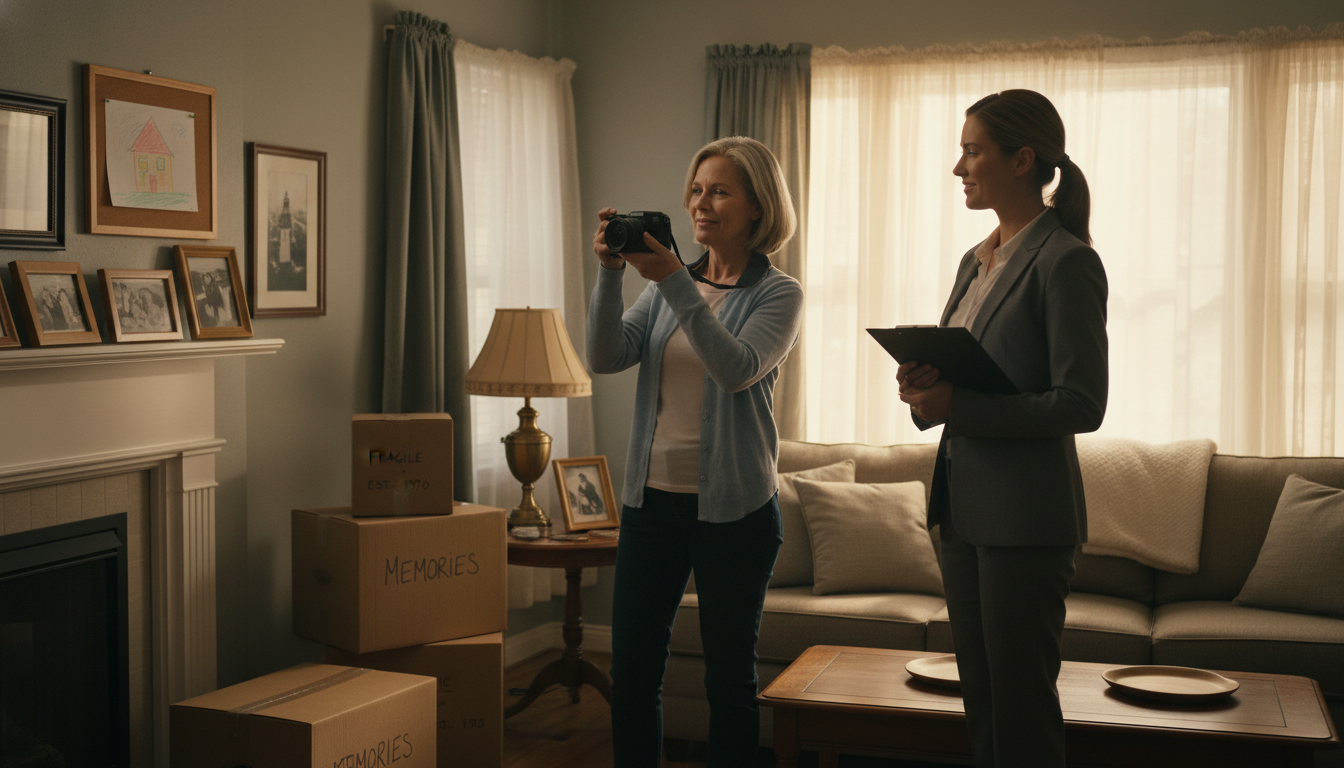How do I sell a childhood home without losing sentimental value?
Could you sell your childhood home and keep every memory? Here’s the exact playbook.
Introduction — Sell the House, Keep the Heart
Selling a childhood home is not just a real estate transaction. It’s an emotional operation. You want top market value and a smooth sale — but you also want those memories to remain intact. This post gives a direct, no-fluff plan to sell a childhood home without losing sentimental value. Read it, follow the steps, and you’ll keep what matters while getting the most from the sale.
Why sentimental value gets destroyed — and how to stop it
Most people lose sentimental value in three ways: rushed decisions, poor planning, and letting the market dictate emotional choices. Fix all three with a simple strategy:
- Separate memories from the physical house.
- Preserve the story before changes.
- Use a selling plan that protects emotional assets.
This is practical, not sappy. Do these steps and you’ll sell the house cleanly while keeping the meaning.

Step 1 — Decide what you must keep
Before you call anyone, make a list. Use three columns: Keep, Sell/Donate, Leave for Buyer.
- Keep: Heirlooms, letters, photo albums, childhood artwork, jewelry.
- Sell/Donate: Extra furniture, duplicate items, outdated appliances.
- Leave for Buyer: Built-ins, landscaping choices, anything that increases curb appeal.
Tip: If something is costly to move but priceless to you emotionally, consider photographing it in high resolution and replacing the object with a similar but less costly item for the buyer.
Step 2 — Create a memory archive
Memories survive in stories and pictures. Make an archive you can revisit.
- Photograph every room and important item. Use natural light.
- Record short videos telling a 1–2 minute story about rooms or objects.
- Scan letters, school projects, certificates.
- Build a single folder (cloud backup) labeled HouseName-Year.
This archive preserves sentiment and makes it easy to part with physical items.
Step 3 — Stage for the buyer, not for your memories
You can sell fast and still preserve the soul of the home.
- Neutral staging increases offers. Remove personal clutter but keep tasteful, meaningful touches in photos for the archive instead.
- Keep one small, subtle nod to the home’s history: a framed vintage photo on a side table. Don’t crowd rooms with sentimental objects.
Buyers need a blank canvas. Give it to them without giving away your story.
Step 4 — Use emotional marketing to attract the right buyer
Not all buyers treat a home the same. Target buyers who value character.
- List features that tell the home’s story: original hardwood, handcrafted trim, mature gardens.
- Create a one-page “House History” for serious buyers — not a tearjerker, but a factual, warm narrative that shows care and pride.
- Schedule private showings for buyers who ask about the home’s history.
This draws buyers who will respect the property and may value paying more for its character.

Step 5 — Work with a sensitive, experienced realtor
A good realtor sells value and guards memories. Tony Sousa knows how to sell childhood homes without erasing the past.
- He will advise what to keep visible and what to remove for marketability.
- He’ll craft listing language that attracts buyers who respect character.
- He will negotiate terms like short private showing windows or a rent-back if you need time to move.
Trust a pro who knows the emotional and financial balance.
Step 6 — Practical legal and financial steps to protect sentimental items
- Document items you will remove. Take timestamps and photos.
- If the home is estate property, consult an estate attorney about dispositions.
- Keep receipts for any removal, repair, or restoration related to sentimental property.
Small records prevent disputes. They keep your memories safe and legally protected.
Step 7 — Create closure rituals
Emotional closure speeds the moving process.
- Host a final family visit day. Walk through, tell stories, take pictures.
- Have a short ritual: plant a small tree, share a meal, record a group message.
- Make one final professional photo session in the empty house for the family archive.
Closure turns loss into preserved legacy.
Checklist — Action steps to sell your childhood home without losing value
- Make a Keep/Sell/Leave list.
- Photograph rooms and heirlooms; create a cloud archive.
- Neutral-stage the house; remove personal clutter.
- Create a one-page House History for buyers.
- Choose a sensitive realtor experienced with emotional sales.
- Document all removed items with photos and timestamps.
- Hold a family closure day and a final professional photo shoot.
- Negotiate simple protections: rent-back, restricted showing windows, or sale contingencies.
Follow this checklist and you’ll protect memories while maximizing sale value.

Common questions, answered fast
Q: Should I keep original furniture? A: Only if it fits your plan and is easy to move. Photograph originals if they’re too costly to relocate.
Q: What if family fights over items? A: Freeze decisions. Get neutral mediation or a trusted estate planner.
Q: Can I rent back the home after sale? A: Yes. Ask your realtor to negotiate a short rent-back in the purchase agreement.
Conclusion — Sell with clarity, keep the memories
Selling a childhood home doesn’t mean losing your past. You protect sentiment by planning, documenting, and choosing the right selling strategy. Tony Sousa is a local realtor who combines market expertise with emotional intelligence. He will help you price right, market the character, and negotiate terms that protect what matters.
If you want a step-by-step partner who respects the story behind your home, contact Tony Sousa: tony@sousasells.ca | 416-477-2620 | https://www.sousasells.ca
Sell smart. Keep the memories. Move forward with more cash and less regret.





















